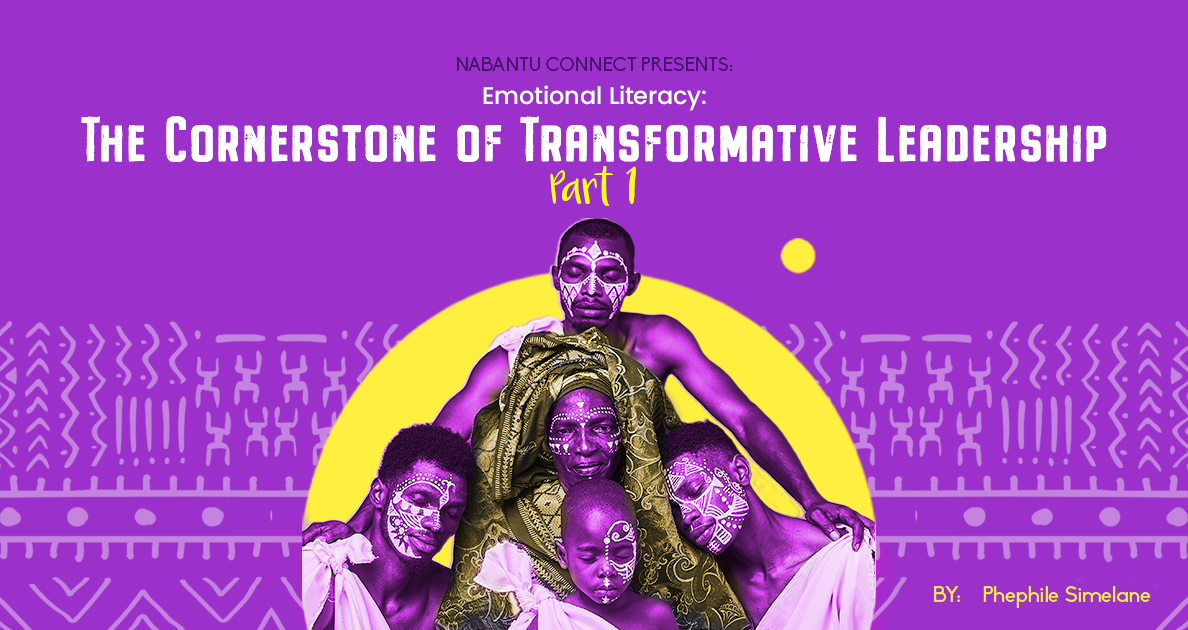Emotional Literacy: The Cornerstone of Transformative Leadership Part 1
The demand for exceptional leadership capacity has never been more crucial. The role of leaders extends far beyond the realm of traditional management tasks; it encompasses the profound realm of emotional intelligence and self-mastery. Understanding the fundamental distinction between emotions and moods and developing emotional literacy are linchpins for decision-making excellence and organisational success.
Emotional literacy is not merely a soft skill, but the sharpened blade leaders wield to cut through the fog of uncertainty, ambiguity, and chaos. Data-driven decisions alone are no longer sufficient, and as a result, emotional literacy emerges as a cornerstone of leadership prowess. It is the bridge that connects raw feelings to the realm of sound judgment, enabling leaders to navigate the tempestuous waters of professional life with precision and purpose.
Emotions, far from being impediments to effective leadership, serve as an additional centre of intelligence, expanding the decision-making capacity of leaders. They offer insights, motivations, and perspectives that analytical thinking alone cannot provide. Leaders who harness the power of emotional literacy unlock new dimensions of strategic thinking and empathy, fostering an environment where individuals thrive and organisations flourish.
Emotions vs. Moods: The Subtle Distinction
Emotions and moods are integral to our human experience, yet they manifest differently and serve distinct functions. External stimuli typically trigger emotions – compliments, criticism, or a challenging situation can all elicit emotional responses. Emotions are relatively short-lived, often lasting no more than 90 seconds. They provide immediate data about our reactions to the world around us.
On the other hand, moods linger in the background, shaping our overall perception of reality. Moods are often inherited from our upbringing and environment and can be contagious within a workplace. For instance, when leaders enter the room, their mood can set the tone for the entire team. Being mindful of your mood and emotional legacy is crucial, and this responsibility extends to parents as well, as they play a significant role in shaping a child’s emotional foundation. Linking this back to the workplace, while emotions have been historically dismissed, they are critical drivers in establishing the culture that defines an organisation.
The Importance of Emotional Literacy
Despite the pervasive role emotions and moods play in our lives, society has historically placed greater emphasis on cognitive intelligence. Emotional literacy – the ability to recognise, understand, and manage emotions – is often underdeveloped. Many individuals feel emotions but struggle to process them effectively.
Emotions are a form of intelligence that provides valuable data. For example, anger can signify a perceived injustice, directing attention to the source of unfairness. However, you
must move beyond mere emotional reaction and toward emotional mastery to harness this emotional intelligence effectively.
Where to From Here?
In a global society historically focused on cognitive intelligence, the importance of emotional literacy cannot be overstated. It is a form of intelligence that offers valuable data. While emotions can signal perceived injustices, emotional mastery is the key to effectively harnessing this intelligence. For leaders to flourish in this new era, the journey involves familiarising themselves with the vocabulary of emotional literacy, tapping into resources from specialists like Nabantu, and using tools such as the Nabantu emotions library. This transformation is not achieved through cognitive exercises but through vulnerability and the strength to immerse oneself in one’s own emotions, unlocking the full potential of leadership and organisational success. The question is, are you the leader who consciously changes the emotional legacy in your environment for the better?

Written by
Phephile Simelane
CEO: Nabantu
Sign up for more articles


